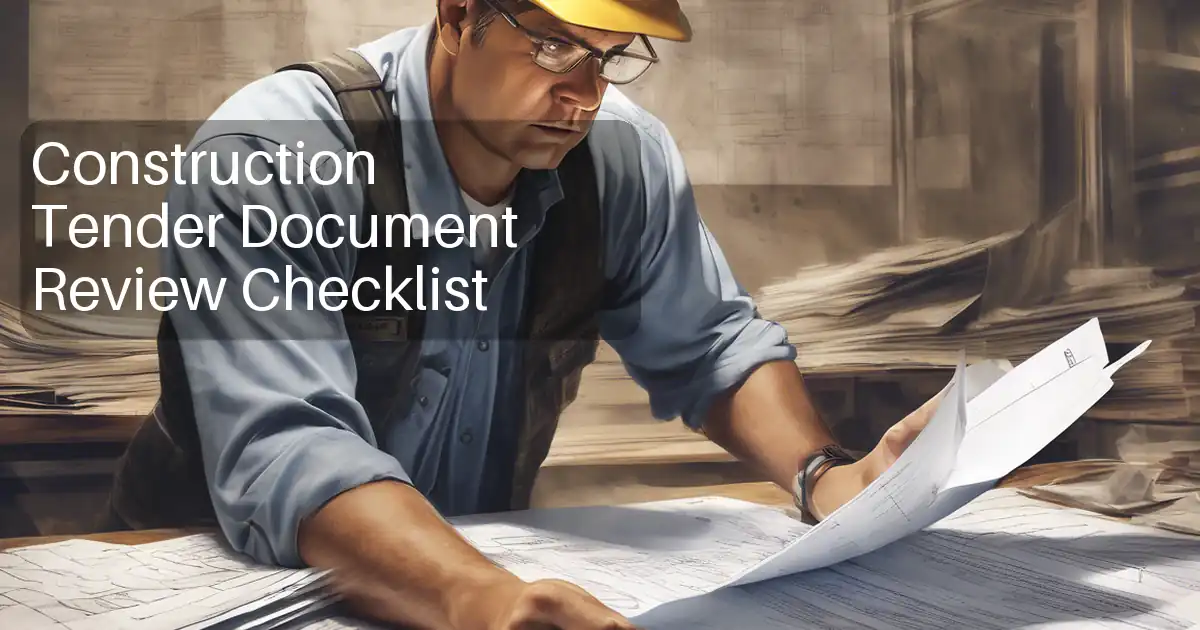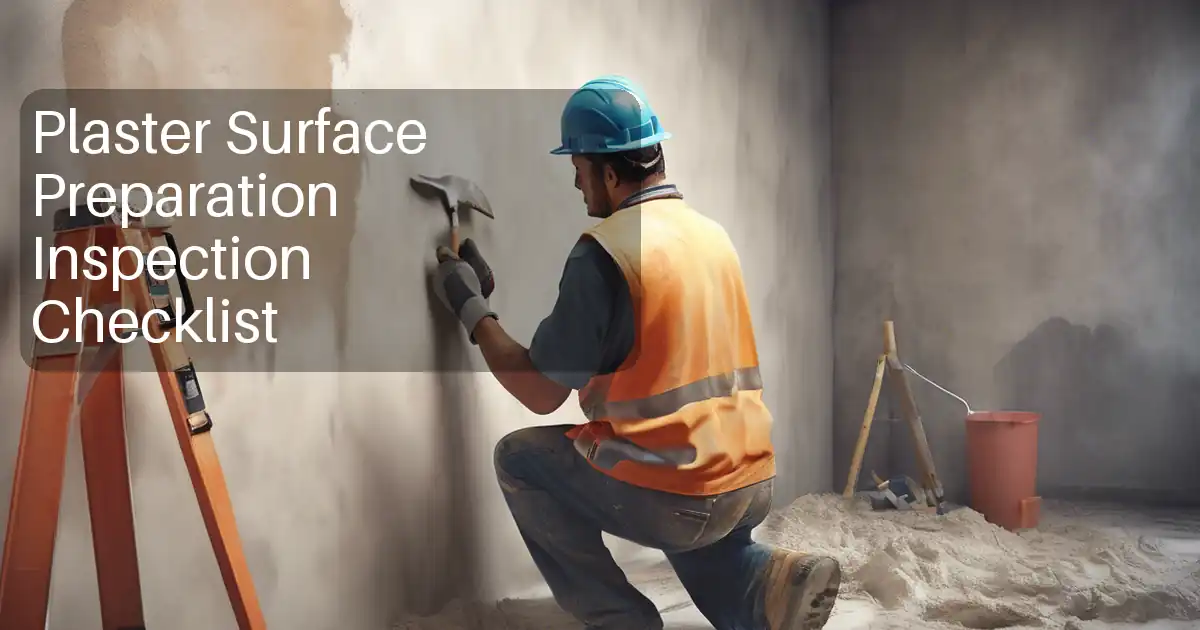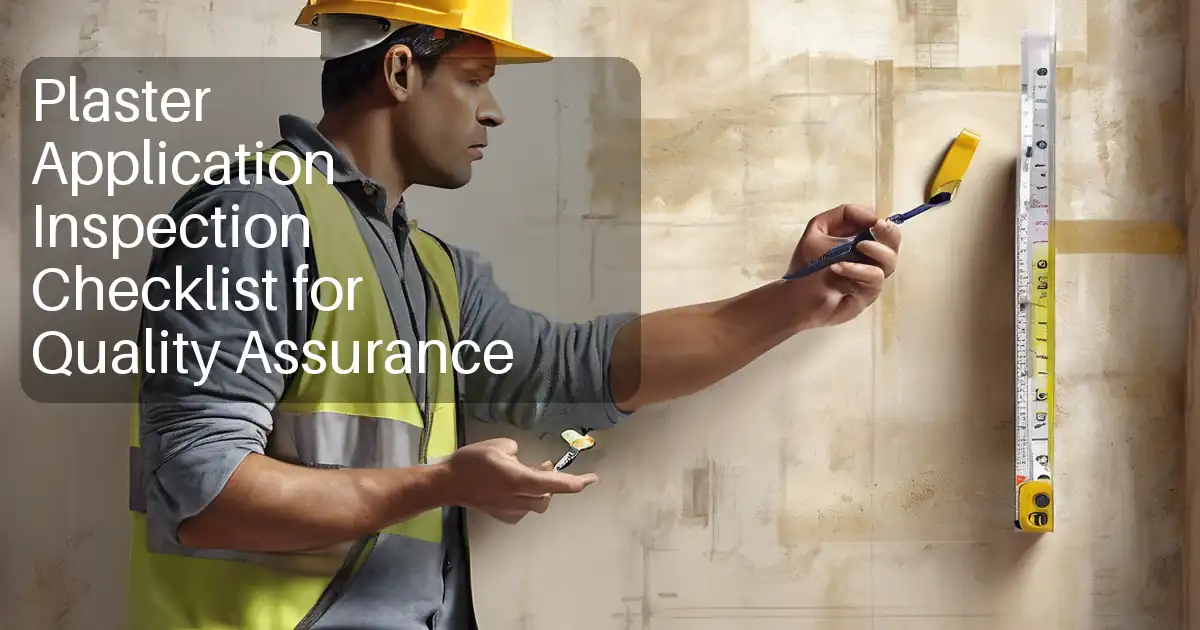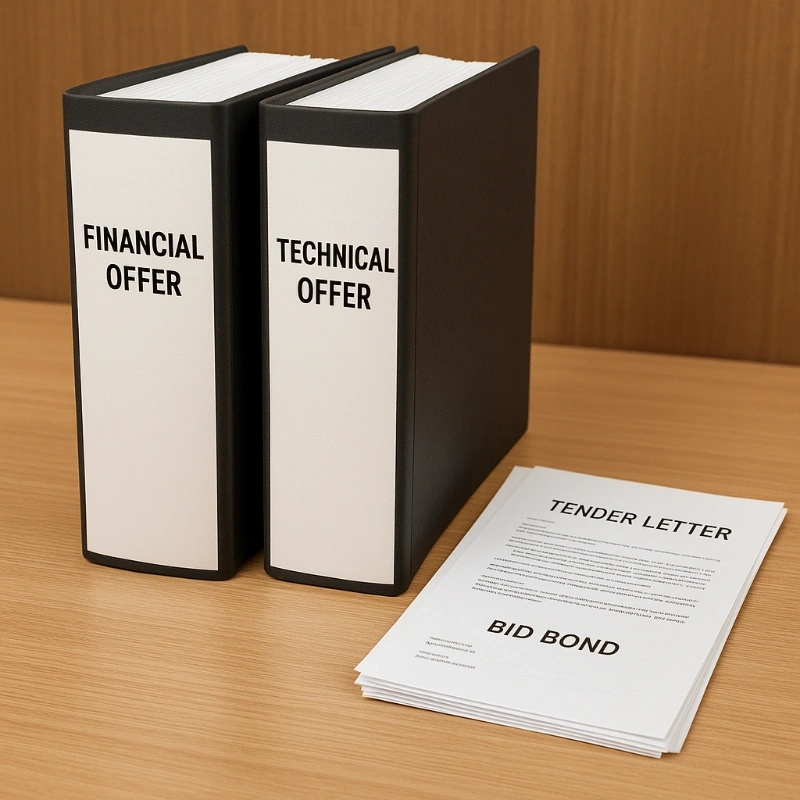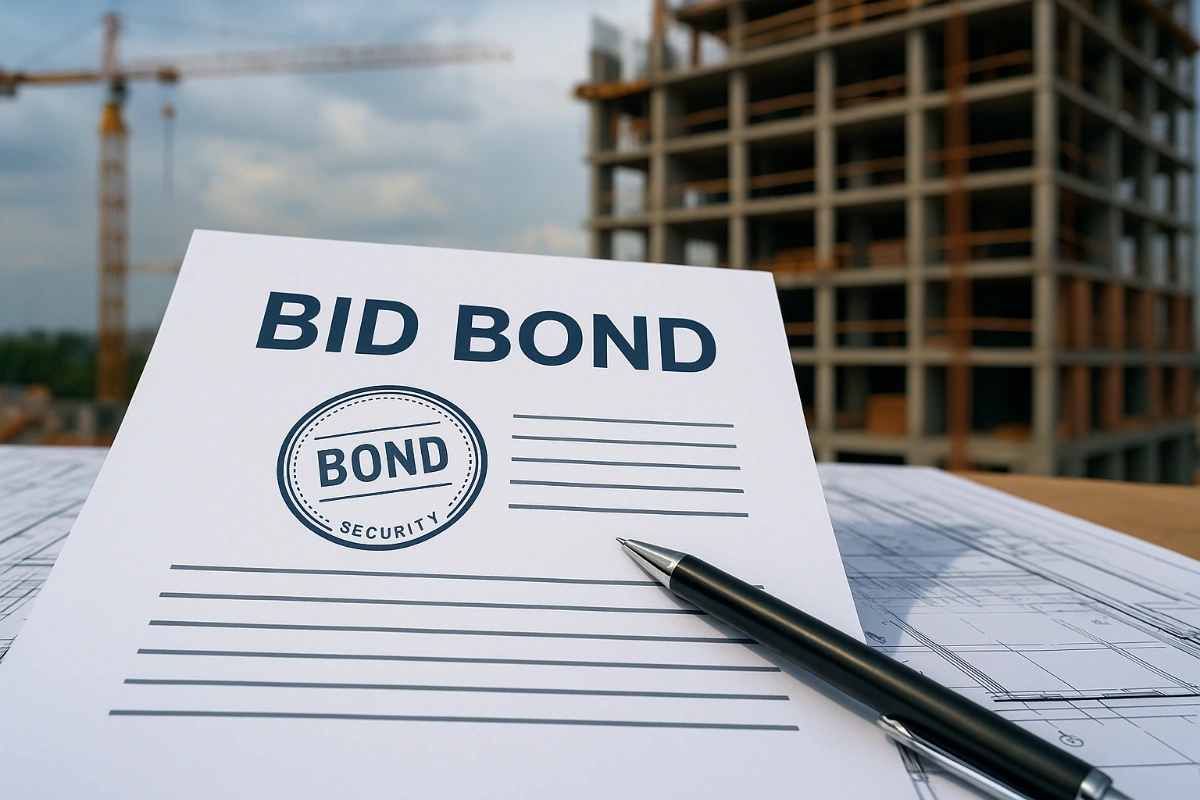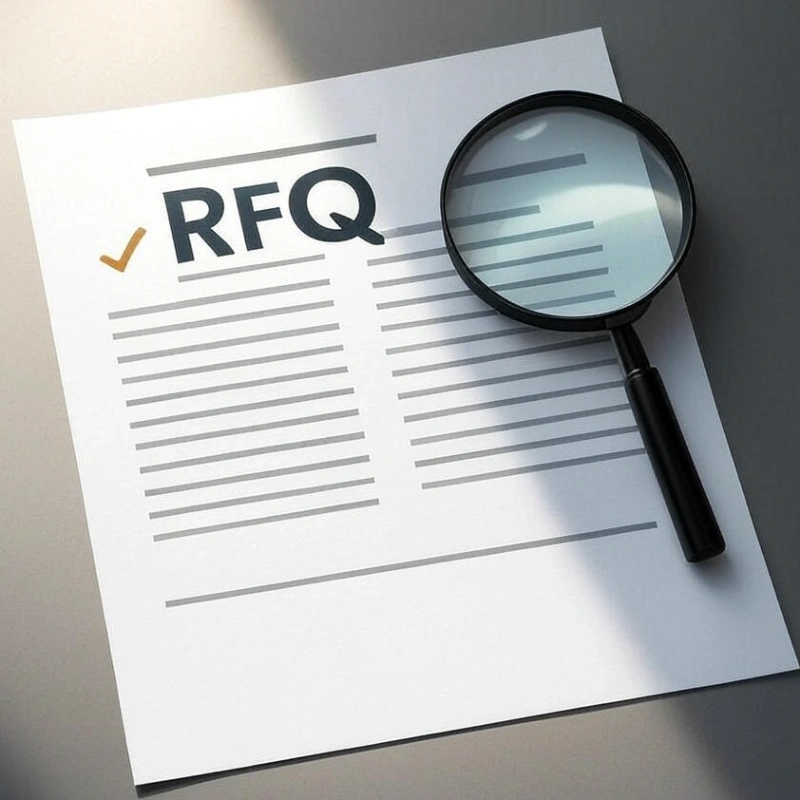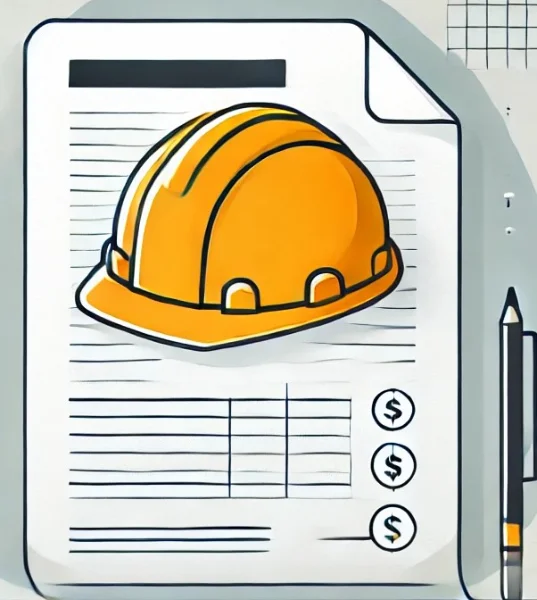Construction Tender Preparation Guide | Step-by-Step Bidding Process
Mastering the Construction Tender Preparation Process: A Step-by-Step Guide
What is a Tender in Construction?
A tender is a formal offer submitted by a contractor to undertake a construction project or provide services at a predetermined price and terms. The tendering process involves receiving and evaluating bids to choose the most suitable contractor based on cost, expertise, and schedule.
Legal Obligations of the Tenderer
Submitting a tender legally binds contractors to the conditions stated in their bid. In many regions, tender submission creates a contractual relationship (known as "Contract A") requiring bidders to honor their commitments or face legal penalties.
Step 1: Invitation to Bid (ITB)
When contractors receive an Invitation to Bid, they must promptly initiate the following actions:
-
Document Review: Collect and analyze tender documents (drawings, specs, contractual terms, addenda, site visit notes).
-
Internal Notification: Inform senior management and key technical and commercial personnel.
Step 2: Decision to Bid (Pre-Bid Evaluation)
A comprehensive assessment determines project feasibility and profitability:
Technical Capability
-
Evaluate company expertise against project requirements.
-
Identify specialized surveys, tests, or designs beyond current capabilities.
Financial Capacity
-
Confirm availability of financing, bonds, and insurance.
-
Verify the company's financial strength supports bid bonds, performance bonds, and necessary project insurance.
Contractual Risk Profile
-
Assess contractual terms for risks (penalties, liability clauses, extended defect periods).
-
Highlight high-risk elements affecting profitability.
Location and Site Access
-
Evaluate site remoteness, weather, and geological challenges.
-
Review local regulations and security constraints.
Resource Availability
-
Check human resources, specialist subcontractors, and equipment availability.
-
Identify cost implications for new hires or equipment purchases.
Project Scale and Workload
-
Ensure compatibility of project size and duration with current workload.
-
Utilize quick estimation methods (e.g., cost per square meter) for bid guidance.
Strategic and Market Considerations
-
Align the project with long-term company goals.
-
Analyze market competition and sustainability or local-content requirements.
Step 3: Assembling the Tendering Team
Create a tailored team to manage tender complexity:
-
Core Estimation Department: Quantity surveying, cost estimation, BOQ preparation.
-
Specialist Advisors: Contract lawyers, plant engineers, insurance brokers, financial analysts, HSE specialists.
Divide the team into specialized workstreams:
-
Cost Estimation
-
Technical Analysis
-
Contractual Review
-
Financial Structuring
Step 4: Parallel Tender Preparation Activities
Efficiently coordinate multiple activities:
Estimation Team Tasks
-
Quantity Surveying: Accurate take-off of materials, labor, and equipment.
-
Work Breakdown Structure (WBS): Define scope by trade packages, subcontractor needs.
-
RFQ Management: Track supplier and subcontractor quotations systematically.
-
BOQ Compilation: Integrate quotations, validate rates, and include contingency.
Financial Team Tasks
-
Bond and Insurance Arrangements: Secure preliminary terms for all required bonds and insurances.
-
Cash Flow Forecasting: Develop a detailed cash flow model based on the project schedule.
-
Cost of Finance Analysis: Compare financing alternatives (loans, leasing), integrating costs into tender pricing.
Technical Team Tasks
-
Document Review and Queries: Resolve technical ambiguities through formal queries.
-
Site Visits: Conduct thorough site inspections, documenting logistical and environmental considerations.
-
Technical Deliverables: Prepare Method Statements, Quality and HSE Plans, and Project Programme.
- Risk Management: Create a detailed risk register including mitigation plans and cost contingencies.

Step 5: Consolidation of Tender Offer
Combine all deliverables (BOQ, technical reports, risk assessment, cash flow analysis) into a coherent proposal. Ensure consistency and accuracy across all documentation.
Step 6: Tender Submission Preparation
Formally structure your submission into three parts:
-
Bid Bond: Verify formatting and validity.
-
Financial Offer: Detailed BOQ with price breakdowns and summaries.
-
Technical Offer: Include method statements, schedules, organizational charts, HSE documentation, and required certifications.
Draft a main tender letter clearly outlining qualifications, exclusions, deviations, and compliance with tender conditions.
Step 7: Post-Tender Negotiations
Expect and professionally handle:
-
Client Queries: Clarifications regarding pricing, scheduling, or technical solutions.
-
Negotiation Meetings: Value-engineering discussions, adjustments in schedules or contractual terms.
-
Best-and-Final Offers: Revise financial and technical proposals as required, documenting all changes clearly.
Step 8: Post-Tender Review and Continuous Improvement
Win or lose, always:
-
Log bid outcomes, capture feedback, and identify lessons learned.
-
Conduct variance analysis between estimates and actual project execution.
-
Update subcontractor lists, cost benchmarks, and risk management databases for future projects.
Step 9: Contract Award and Project Mobilization
Upon successful tender award:
-
Issue the Letter of Acceptance promptly.
-
Transition tender documents into executable project contracts.
-
Mobilize resources, finalize procurement orders, staffing, and detailed project plans aligned with tender commitments.

flowchart for tendering procedure | Workflow step-by-step flowchart for tender preparation process
References
- R v Ron Engineering and Construction (Eastern) Ltd
- Construction Tender Register Bid Tracker Template
- Bid Bond Guide
- Construction Tender Progress Log Template
Frequently Asked Questions about Construction Tender Preparation Guide

Q: What is a construction tender preparation checklist and why is it essential?
A: A construction tender preparation checklist is a structured list of tasks—from document review and tender register entry to RFQ management and risk register updates. Using a checklist ensures no step is missed, boosts bid accuracy by up to 30%, and speeds up the process by standardizing workflows. Download the tender preparation checklist at the end of this article to streamline your bid management and improve competitive edge.

Q: How do I conduct an effective pre-bid evaluation?
A: An effective pre-bid evaluation uses a standardized pre-bid evaluation template to assess technical capability, financial capacity, contractual risk, site constraints, and resource availability. By scoring each criterion, you can rank projects on profitability and strategic fit. Incorporate quick ratio analysis (e.g., cost per square meter) for rapid feasibility insights and refer to the pre-bid evaluation template below for consistency.

Q: What key elements should an RFQ tracking sheet include?
A: A robust RFQ tracking sheet captures supplier and subcontractor names, quotation deadlines, submission status, clarifications, and bid bond requirements. It integrates directly with your tender management software to send automated reminders. Including columns for “response received,” “rate validation,” and “contingency allowance” helps maintain transparency and ensures you can finalize the BOQ accurately.

Q: How can a risk register template improve my tender submission?
A: A risk register template identifies, categorizes, and mitigates potential project risks—technical, environmental, logistical, and contractual. By quantifying each risk with impact scores and contingency allowances, you can present a more realistic bid and reduce cost overruns by up to 20%. Use the downloadable risk register template in this article to document threats and action plans.

Q: Which bid management software tools are recommended for tender submissions?
A: Leading bid management software solutions offer integrated document control, RFQ modules, and collaboration workstreams. Tools like Procore, Aconex, and BIM 360 streamline versioning, real-time updates, and audit trails. When choosing software, look for features such as automated tender register updates, built-in cash flow modeling, and HSE plan integration to enhance your tendering efficiency.

Q: What legal obligations should a contractor know before submitting a tender?
A: Submitting a tender creates a binding “Contract A” in many jurisdictions, legally obligating you to honor bid terms. Non-compliance can lead to penalty bonds being called or litigation. Always verify bid bond validity, ensure you meet insurance requirements, and confirm that your tender documents adhere strictly to ITT conditions to avoid legal and financial risks.

Q: How is cash flow forecasting integrated into tender pricing?
A: Cash flow forecasting in tendering involves mapping payment milestones, mobilization costs, and equipment financing against the project schedule. By plotting cash inflows and outflows on a master programme Gantt chart, you can size working capital requirements and optimize financing choices. A clear cash flow model can reduce finance costs by up to 15% and support competitive pricing.

Q: What are the main types of tendering methods in construction?
A: The three primary tendering methods are open (competitive) tendering, selective (pre-qualified) tendering, and negotiated tendering. Open tendering invites public bids, selective tendering restricts bidders to approved contractors, and negotiated tendering involves direct negotiation with a chosen contractor. Each method has trade-offs in competition level, bid preparation effort, and risk allocation.

Q: How can I optimize my tender documents for compliance and quality?
A: To optimize tender documents, use a consistent document control system, include versioned addenda logs, and apply clear headings and page numbering. Incorporate a standardized Main Tender Letter template highlighting exclusions, deviations, and alternative proposals. Consistency reduces review time by 25% and demonstrates professionalism, enhancing your bid’s credibility.

Q: What best practices should I follow during post-tender negotiations?
A: During post-tender negotiations, prepare a detailed response matrix mapping client queries to tender sections, involve senior management for key decisions, and document all amendments systematically. Use value-engineering workshops to explore cost-saving options. Adopting these practices can improve win rates by up to 10% and ensure clear communication throughout the negotiation phase.
 Login to Quollnet
Login to Quollnet
